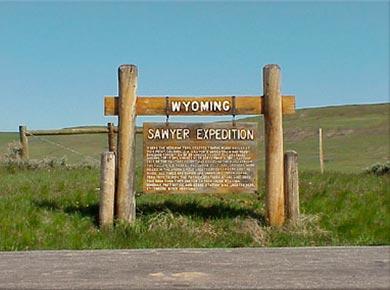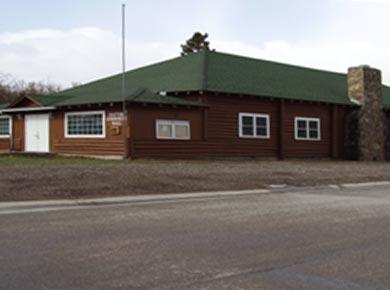
History of Dayton, Wyoming
Dayton was named in 1882 after Joe Dayton Thorne, one of the founding fathers of the community. The town has the distinction of electing the first female mayor in Wyoming, Susan Wissler. In the early 1890's Dayton held Wyoming's first rodeo.
Famous artist, Hans Kleiber, known as the "Etcher Laureate of the Big Horns" made Dayton his home. His studio cabin has been preserved and relocated by the Dayton community to a Main Street location.
Another main street location, the Dayton Mercantile, is a landmark to the romance of the Frontier West. Pull up next to the hitching rail, step out onto the sidewalk and suddenly you are a part of a by-gone era.
Picturesque Tongue River Canyon holds the Tongue River. The river served as an integral part of the flume and floating system used by early logging companies sending ties to down river market destinations.
Located in Dayton's city park is a fire watch tower erected in 1911. The tower, known as Dayton Bell Tower, featured a warning bell to alert the community to fires. Later stairs, phones, and windows were added allowing the tower to be used by the Ground Observer Corp. of the US Air Force to spot aircrafts.

Brief History
The Dayton Community Hall located at the foothills of the Big Horn Mountains was built in the 1930’s by The Works Progress Administration and The Civilian Conservation Corps during the Great Depression. The Dayton Town Council recognized a great need for a community gathering place and a place to hold its town meetings. The property was donated by a long time resident, Susan Walling and the idea was born “The Dayton Community Hall”, being one of the oldest maintained “Community Centers” in the State of Wyoming.
In 1950 the School Board gave the Dayton Community Hall, which was being used regularly for school and community activities, to the Dayton School Benefit Club. The main thrust of the Club has become the maintenance and upkeep of this historic landmark.
The Hall is presently used as a meeting place and for community activities including: Country and youth dances, rentals for wedding receptions, private parties, reunions, church youth groups, a gathering place for friends and families of the recently deceased, fund raising for those in need, and other activities in the Sheridan County and beyond.
